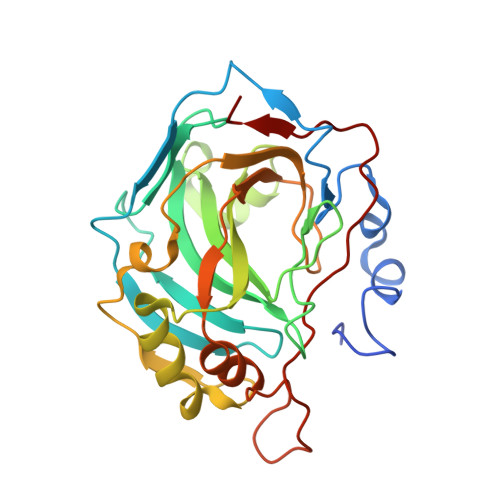Conformational Changes in Alkyl Chains Determine the Thermodynamic and Kinetic Binding Profiles of Carbonic Anhydrase Inhibitors.
Glockner, S., Ngo, K., Sager, C.P., Hufner-Wulsdorf, T., Heine, A., Klebe, G.(2020) ACS Chem Biol 15: 675-685
- PubMed: 32027480
- DOI: https://doi.org/10.1021/acschembio.9b00895
- Primary Citation of Related Structures:
6GDC, 6GM9, 6HQX, 6HR3, 6HXD, 6I0W, 6I1U, 6I2F, 6I3E, 6SBH - PubMed Abstract:
Thermodynamics and kinetics of protein-ligand binding are both important aspects for the design of novel drug molecules. Presently, thermodynamic data are collected with isothermal titration calorimetry, while kinetic data are mostly derived from surface plasmon resonance. The new method of kinITC provides both thermodynamic and kinetic data from calorimetric titration measurements. The present study demonstrates the convenient collection of calorimetric data suitable for both thermodynamic and kinetic analysis for two series of congeneric ligands of human carbonic anhydrase II and correlates these findings with structural data obtained by macromolecular crystallography to shed light on the importance of shape complementarity for thermodynamics and kinetics governing a protein-ligand binding event. The study shows how minute chemical alterations change preferred ligand conformation and can be used to manipulate thermodynamic and kinetic signatures of binding. They give rise to the observation that analogous n -alkyl and n -alkyloxy derivatives of identical chain length swap their binding kinetic properties at unchanged binding affinity.
Organizational Affiliation:
Institut f¨¹r Pharmazeutische Chemie, Philipps-Universit?t Marburg, Marbacher Weg 6, 35032 Marburg, Germany.






















